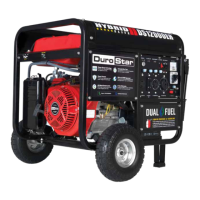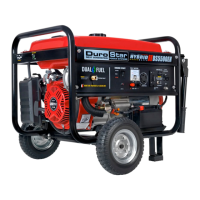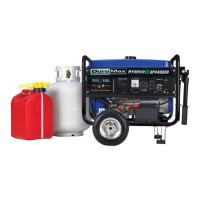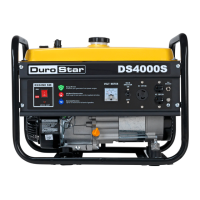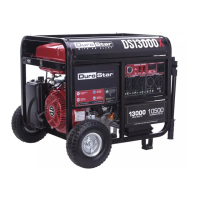Why won't my DuroStar DUAL FUEL DS4400EHF Portable Generator start?
- KKelsey WilliamsAug 5, 2025
If your DuroStar Portable Generator's engine won't start, there are several potential causes. First, ensure the Engine Switch is set to "Run." Next, check that the Fuel Valve is "Open." Also, make sure the choke is closed. The engine may be out of fuel, or the fuel may be old or contaminated, requiring you to add or change the fuel. A dirty or broken spark plug could also be the culprit, so clean or replace it. Additionally, ensure the generator is on a level surface and that the oil level is sufficient, adding or changing the oil if necessary.

